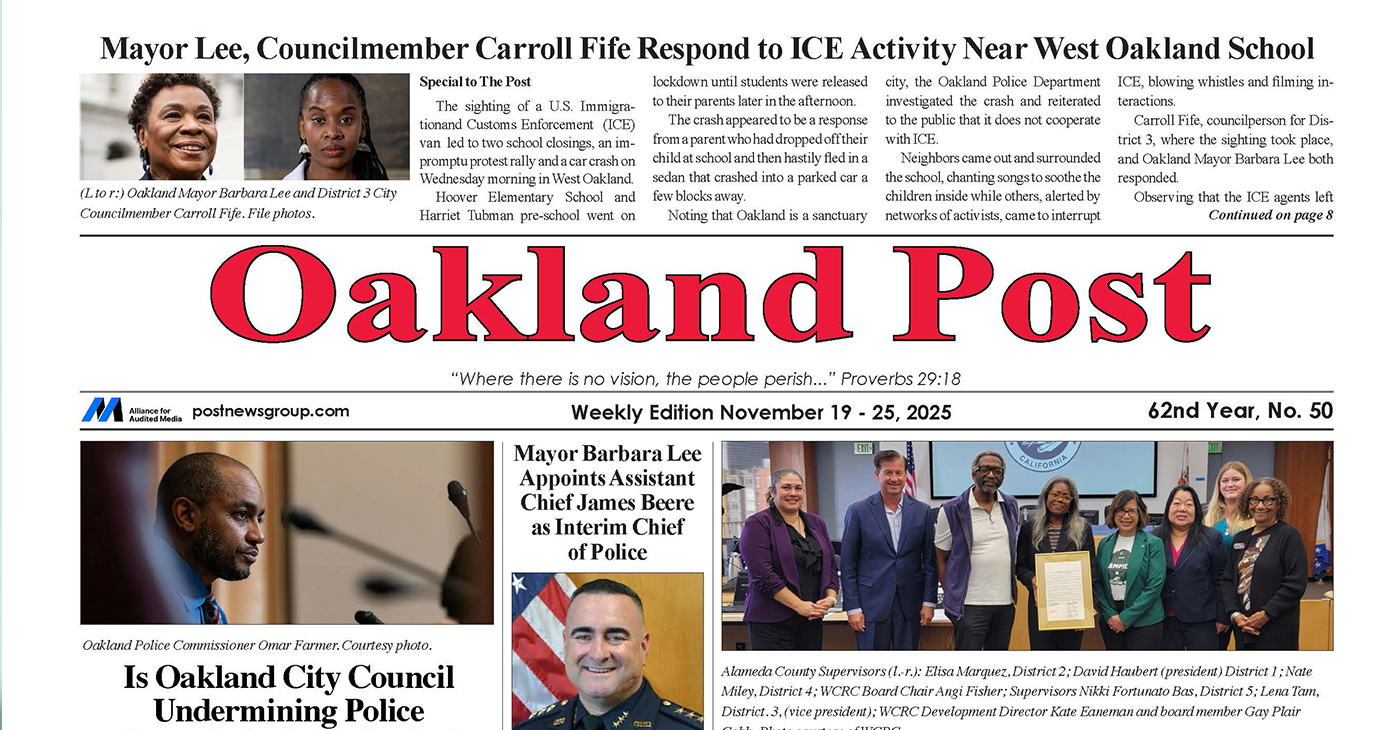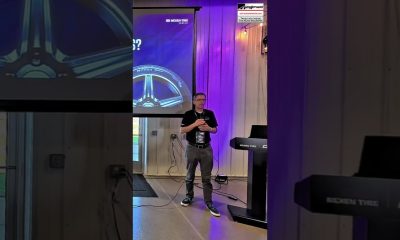Bay Area
Rebecca Kaplan Officially Files to Run for District 3 Alameda County Supervisor
Speakers in support of Kaplan included Oakland Port Commissioners Michael Colbruno and Andreas Cluver; former Alameda County Supervisor Scott Haggerty; Oakland City Councilmembers Sheng Thao, Nikki Bas, and Dan Kalb, and community leaders including Chinatown Chamber of Commerce Leader Rick DaSilva, AASEG Founder Ray Bobbitt, Alameda County Democratic Party Central Committee member Bobbi Lopez and Rev Ken Chambers of the Interfaith Coalition of Alameda County.

Rebecca Kaplan has officially filed to run for Alameda County Supervisor in District 3. Joined by her campaign team, Kaplan submitted her paperwork and will appear on the ballot for the June 7, 2022, election in Alameda County. All registered voters will automatically receive a vote-by-mail ballot in May.
Kaplan launched her campaign with support from a wide range of elected officials, community leaders, and more at a Zoom event.
Speakers in support of Kaplan included Oakland Port Commissioners Michael Colbruno and Andreas Cluver; former Alameda County Supervisor Scott Haggerty; Oakland City Councilmembers Sheng Thao, Nikki Bas, and Dan Kalb, and community leaders including Chinatown Chamber of Commerce Leader Rick DaSilva, AASEG Founder Ray Bobbitt, Alameda County Democratic Party Central Committee member Bobbi Lopez and Rev Ken Chambers of the Interfaith Coalition of Alameda County.
“There’s not a week that goes by where I don’t hear from Rebecca about some creative idea about transportation, the supply chain, about grant money that’s available from regional agencies and this is what a good Supervisor does,” said Commissioner Colbruno.
Haggerty, who served as supervisor for 24 years, and served together with Rebecca Kaplan, in leadership of the Alameda County Transportation Commission, added, “I’ve always enjoyed Rebecca. I just think that she’s a phenomenal person. I think she will be an excellent supervisor.”
Thao stated, “I think the main thing about Rebecca, and I know that she would be the best candidate for this job, is her ability to be so thoughtful in regard to every single issue that comes before her.”

“I don’t know if people know how critical it is for Oakland, Alameda, San Leandro and the unincorporated areas to have someone who knows how local communities can partner and really leverage the opportunity of our county in terms of the policymaking and also the budget,” said Bas. “Rebecca is incredibly smart, creative, solutions oriented, and I certainly have had that experience working together as a councilmember, partnering on homelessness and housing on the budget.”
Kalb added, “Her experience working on regional issues, whether it’s Alameda County or the Bay Area region, is extensive.”
DaSilva said, “In my capacity at the Oakland Chinatown Chamber of Commerce, Rebecca has helped us solve problems.”
Kaplan capped off the week with a volunteer literature drop, launching in Alameda, where numerous volunteers picked up literature and signs and went out to distribute them to voters.
Kaplan spoke with and heard from supporters and members of the public, and gave appreciation for people’s responsiveness, and for volunteers, and important public resources like the beach.
Find the video of the announcement here on YouTube: https://youtu.be/hMx8ecUSCUs
And download available here on Vimeo: https://vimeo.com/686010239
To learn more about Rebecca Kaplan’s history, platform, endorsements, and campaign for Supervisor visit: https://www.supervisorkaplan.org/
Contact: Julie Wedge, Campaign Manager – Rebecca Kaplan for Supervisor 2022
Alameda County
Seth Curry Makes Impressive Debut with the Golden State Warriors
Seth looked comfortable in his new uniform, seamlessly fitting into the Warriors’ offensive and defensive system. He finished the night with an impressive 14 points, becoming one of the team’s top scorers for the game. Seth’s points came in a variety of ways – floaters, spot-up three-pointers, mid-range jumpers, and a handful of aggressive drives that kept the Oklahoma City Thunder defense on its heels.

By Y’Anad Burrell
Tuesday night was anything but ordinary for fans in San Francisco as Seth Curry made his highly anticipated debut as a new member of the Golden State Warriors. Seth didn’t disappoint, delivering a performance that not only showcased his scoring ability but also demonstrated his added value to the team.
At 35, the 12-year NBA veteran on Monday signed a contract to play with the Warriors for the rest of the season.
Seth looked comfortable in his new uniform, seamlessly fitting into the Warriors’ offensive and defensive system. He finished the night with an impressive 14 points, becoming one of the team’s top scorers for the game. Seth’s points came in a variety of ways – floaters, spot-up three-pointers, mid-range jumpers, and a handful of aggressive drives that kept the Oklahoma City Thunder defense on its heels.
One of the most memorable moments of the evening came before Seth even scored his first points. As he checked into the game, the Chase Center erupted into applause, with fans rising to their feet to give the newest Warrior a standing ovation.
The crowd’s reaction was a testament not only to Seth’s reputation as a sharpshooter but also to the excitement he brings to the Warriors. It was clear that fans quickly embraced Seth as one of their own, eager to see what he could bring to the team’s championship aspirations.
Warriors’ superstar Steph Curry – Seth’s brother – did not play due to an injury. One could only imagine what it would be like if the Curry brothers were on the court together. Magic in the making.
Seth’s debut proved to be a turning point for the Warriors. Not only did he contribute on the scoreboard, but he also brought a sense of confidence and composure to the floor.
While their loss last night, OKC 124 – GSW 112, Seth’s impact was a game-changer and there’s more yet to come. Beyond statistics, it was clear that Seth’s presence elevated the team’s performance, giving the Warriors a new force as they look to make a deep playoff run.
Activism
Oakland Post: Week of November 26 – December 2, 2025
The printed Weekly Edition of the Oakland Post: Week of November 26 – December 2, 2025

To enlarge your view of this issue, use the slider, magnifying glass icon or full page icon in the lower right corner of the browser window.
Activism
Oakland Post: Week of November 19 – 25, 2025
The printed Weekly Edition of the Oakland Post: Week of November 19 – 25, 2025

To enlarge your view of this issue, use the slider, magnifying glass icon or full page icon in the lower right corner of the browser window.
-

 Activism3 weeks ago
Activism3 weeks agoOakland Post: Week of November 12 – 18, 2025
-

 Activism4 weeks ago
Activism4 weeks agoOakland Post: Week of November 5 – 11, 2025
-

 Activism2 weeks ago
Activism2 weeks agoIN MEMORIAM: William ‘Bill’ Patterson, 94
-

 Activism3 weeks ago
Activism3 weeks agoHow Charles R. Drew University Navigated More Than $20 Million in Fed Cuts – Still Prioritizing Students and Community Health
-

 #NNPA BlackPress3 weeks ago
#NNPA BlackPress3 weeks agoThe Perfumed Hand of Hypocrisy: Trump Hosted Former Terror Suspect While America Condemns a Muslim Mayor
-

 #NNPA BlackPress3 weeks ago
#NNPA BlackPress3 weeks agoProtecting Pedophiles: The GOP’s Warped Crusade Against Its Own Lies
-

 Bay Area3 weeks ago
Bay Area3 weeks agoNo Justice in the Justice System
-

 #NNPA BlackPress4 weeks ago
#NNPA BlackPress4 weeks ago2026 Subaru Forester Wilderness Review: Everyday SUV With Extra Confidence
























































